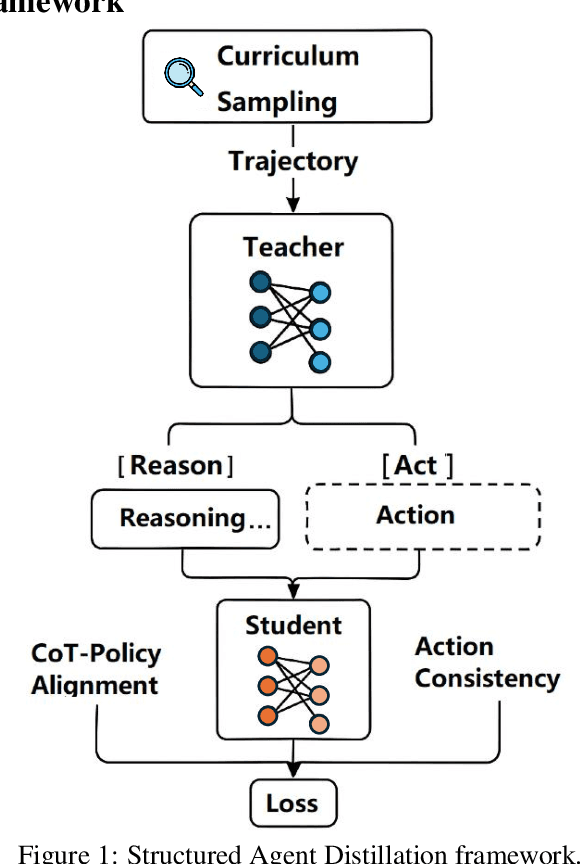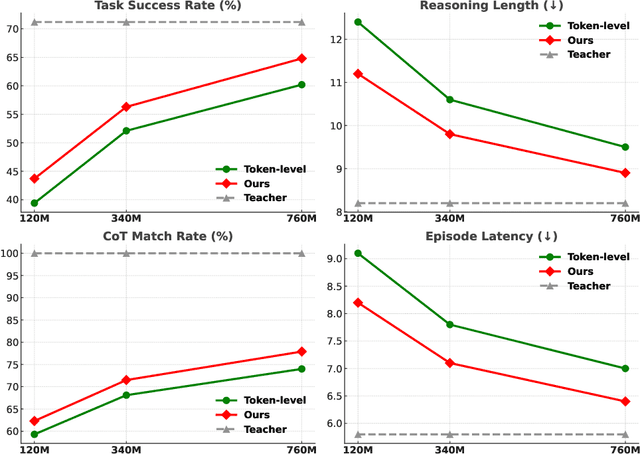Geng Yuan
Rethinking the Potential of Layer Freezing for Efficient DNN Training
Aug 20, 2025Abstract:With the growing size of deep neural networks and datasets, the computational costs of training have significantly increased. The layer-freezing technique has recently attracted great attention as a promising method to effectively reduce the cost of network training. However, in traditional layer-freezing methods, frozen layers are still required for forward propagation to generate feature maps for unfrozen layers, limiting the reduction of computation costs. To overcome this, prior works proposed a hypothetical solution, which caches feature maps from frozen layers as a new dataset, allowing later layers to train directly on stored feature maps. While this approach appears to be straightforward, it presents several major challenges that are severely overlooked by prior literature, such as how to effectively apply augmentations to feature maps and the substantial storage overhead introduced. If these overlooked challenges are not addressed, the performance of the caching method will be severely impacted and even make it infeasible. This paper is the first to comprehensively explore these challenges and provides a systematic solution. To improve training accuracy, we propose \textit{similarity-aware channel augmentation}, which caches channels with high augmentation sensitivity with a minimum additional storage cost. To mitigate storage overhead, we incorporate lossy data compression into layer freezing and design a \textit{progressive compression} strategy, which increases compression rates as more layers are frozen, effectively reducing storage costs. Finally, our solution achieves significant reductions in training cost while maintaining model accuracy, with a minor time overhead. Additionally, we conduct a comprehensive evaluation of freezing and compression strategies, providing insights into optimizing their application for efficient DNN training.
TSLA: A Task-Specific Learning Adaptation for Semantic Segmentation on Autonomous Vehicles Platform
Aug 17, 2025



Abstract:Autonomous driving platforms encounter diverse driving scenarios, each with varying hardware resources and precision requirements. Given the computational limitations of embedded devices, it is crucial to consider computing costs when deploying on target platforms like the NVIDIA\textsuperscript{\textregistered} DRIVE PX 2. Our objective is to customize the semantic segmentation network according to the computing power and specific scenarios of autonomous driving hardware. We implement dynamic adaptability through a three-tier control mechanism -- width multiplier, classifier depth, and classifier kernel -- allowing fine-grained control over model components based on hardware constraints and task requirements. This adaptability facilitates broad model scaling, targeted refinement of the final layers, and scenario-specific optimization of kernel sizes, leading to improved resource allocation and performance. Additionally, we leverage Bayesian Optimization with surrogate modeling to efficiently explore hyperparameter spaces under tight computational budgets. Our approach addresses scenario-specific and task-specific requirements through automatic parameter search, accommodating the unique computational complexity and accuracy needs of autonomous driving. It scales its Multiply-Accumulate Operations (MACs) for Task-Specific Learning Adaptation (TSLA), resulting in alternative configurations tailored to diverse self-driving tasks. These TSLA customizations maximize computational capacity and model accuracy, optimizing hardware utilization.
RCR-Router: Efficient Role-Aware Context Routing for Multi-Agent LLM Systems with Structured Memory
Aug 06, 2025Abstract:Multi-agent large language model (LLM) systems have shown strong potential in complex reasoning and collaborative decision-making tasks. However, most existing coordination schemes rely on static or full-context routing strategies, which lead to excessive token consumption, redundant memory exposure, and limited adaptability across interaction rounds. We introduce RCR-Router, a modular and role-aware context routing framework designed to enable efficient, adaptive collaboration in multi-agent LLMs. To our knowledge, this is the first routing approach that dynamically selects semantically relevant memory subsets for each agent based on its role and task stage, while adhering to a strict token budget. A lightweight scoring policy guides memory selection, and agent outputs are iteratively integrated into a shared memory store to facilitate progressive context refinement. To better evaluate model behavior, we further propose an Answer Quality Score metric that captures LLM-generated explanations beyond standard QA accuracy. Experiments on three multi-hop QA benchmarks -- HotPotQA, MuSiQue, and 2WikiMultihop -- demonstrate that RCR-Router reduces token usage (up to 30%) while improving or maintaining answer quality. These results highlight the importance of structured memory routing and output-aware evaluation in advancing scalable multi-agent LLM systems.
ACE: Exploring Activation Cosine Similarity and Variance for Accurate and Calibration-Efficient LLM Pruning
May 28, 2025



Abstract:With the rapid expansion of large language models (LLMs), the demand for memory and computational resources has grown significantly. Recent advances in LLM pruning aim to reduce the size and computational cost of these models. However, existing methods often suffer from either suboptimal pruning performance or low time efficiency during the pruning process. In this work, we propose an efficient and effective pruning method that simultaneously achieves high pruning performance and fast pruning speed with improved calibration efficiency. Our approach introduces two key innovations: (1) An activation cosine similarity loss-guided pruning metric, which considers the angular deviation of the output activation between the dense and pruned models. (2) An activation variance-guided pruning metric, which helps preserve semantic distinctions in output activations after pruning, enabling effective pruning with shorter input sequences. These two components can be readily combined to enhance LLM pruning in both accuracy and efficiency. Experimental results show that our method achieves up to an 18% reduction in perplexity and up to 63% decrease in pruning time on prevalent LLMs such as LLaMA, LLaMA-2, and OPT.
KerZOO: Kernel Function Informed Zeroth-Order Optimization for Accurate and Accelerated LLM Fine-Tuning
May 24, 2025Abstract:Large language models (LLMs) have demonstrated impressive capabilities across numerous NLP tasks. Nevertheless, conventional first-order fine-tuning techniques impose heavy memory demands, creating practical obstacles to real-world applications. Zeroth-order (ZO) optimization has recently emerged as a promising memory-efficient alternative, as it circumvents the need for backpropagation by estimating gradients solely through forward passes--making it particularly suitable for resource-limited environments. Despite its efficiency, ZO optimization suffers from gradient estimation bias, which significantly hinders convergence speed. To address this, we analytically identify and characterize the lower-order bias introduced during ZO-based gradient estimation in LLM fine-tuning. Motivated by tools in mathematical physics, we introduce a kernel-function-based ZO framework aimed at mitigating this bias and improving optimization stability. KerZOO achieves comparable or superior performance to existing ZO baselines in both full-parameter and parameter-efficient fine-tuning settings of LLMs, while significantly reducing the number of iterations required to reach convergence. For example, KerZOO reduces total GPU training hours by as much as 74% and 44% on WSC and MultiRC datasets in fine-tuning OPT-2.7B model and can exceed the MeZO baseline by 2.9% and 2.6% in accuracy. We show that the kernel function is an effective avenue for reducing estimation bias in ZO methods.
Structured Agent Distillation for Large Language Model
May 20, 2025



Abstract:Large language models (LLMs) exhibit strong capabilities as decision-making agents by interleaving reasoning and actions, as seen in ReAct-style frameworks. Yet, their practical deployment is constrained by high inference costs and large model sizes. We propose Structured Agent Distillation, a framework that compresses large LLM-based agents into smaller student models while preserving both reasoning fidelity and action consistency. Unlike standard token-level distillation, our method segments trajectories into {[REASON]} and {[ACT]} spans, applying segment-specific losses to align each component with the teacher's behavior. This structure-aware supervision enables compact agents to better replicate the teacher's decision process. Experiments on ALFWorld, HotPotQA-ReAct, and WebShop show that our approach consistently outperforms token-level and imitation learning baselines, achieving significant compression with minimal performance drop. Scaling and ablation results further highlight the importance of span-level alignment for efficient and deployable agents.
Perturbation-efficient Zeroth-order Optimization for Hardware-friendly On-device Training
Apr 28, 2025



Abstract:Zeroth-order (ZO) optimization is an emerging deep neural network (DNN) training paradigm that offers computational simplicity and memory savings. However, this seemingly promising approach faces a significant and long-ignored challenge. ZO requires generating a substantial number of Gaussian random numbers, which poses significant difficulties and even makes it infeasible for hardware platforms, such as FPGAs and ASICs. In this paper, we identify this critical issue, which arises from the mismatch between algorithm and hardware designers. To address this issue, we proposed PeZO, a perturbation-efficient ZO framework. Specifically, we design random number reuse strategies to significantly reduce the demand for random number generation and introduce a hardware-friendly adaptive scaling method to replace the costly Gaussian distribution with a uniform distribution. Our experiments show that PeZO reduces the required LUTs and FFs for random number generation by 48.6\% and 12.7\%, and saves at maximum 86\% power consumption, all without compromising training performance, making ZO optimization feasible for on-device training. To the best of our knowledge, we are the first to explore the potential of on-device ZO optimization, providing valuable insights for future research.
Harmony in Divergence: Towards Fast, Accurate, and Memory-efficient Zeroth-order LLM Fine-tuning
Feb 05, 2025



Abstract:Large language models (LLMs) excel across various tasks, but standard first-order (FO) fine-tuning demands considerable memory, significantly limiting real-world deployment. Recently, zeroth-order (ZO) optimization stood out as a promising memory-efficient training paradigm, avoiding backward passes and relying solely on forward passes for gradient estimation, making it attractive for resource-constrained scenarios. However, ZO method lags far behind FO method in both convergence speed and accuracy. To bridge the gap, we introduce a novel layer-wise divergence analysis that uncovers the distinct update pattern of FO and ZO optimization. Aiming to resemble the learning capacity of FO method from the findings, we propose \textbf{Di}vergence-driven \textbf{Z}eroth-\textbf{O}rder (\textbf{DiZO}) optimization. DiZO conducts divergence-driven layer adaptation by incorporating projections to ZO updates, generating diverse-magnitude updates precisely scaled to layer-wise individual optimization needs. Our results demonstrate that DiZO significantly reduces the needed iterations for convergence without sacrificing throughput, cutting training GPU hours by up to 48\% on various datasets. Moreover, DiZO consistently outperforms the representative ZO baselines in fine-tuning RoBERTa-large, OPT-series, and Llama-series on downstream tasks and, in some cases, even surpasses memory-intensive FO fine-tuning.
Enhancing Visual Inspection Capability of Multi-Modal Large Language Models on Medical Time Series with Supportive Conformalized and Interpretable Small Specialized Models
Jan 27, 2025



Abstract:Large language models (LLMs) exhibit remarkable capabilities in visual inspection of medical time-series data, achieving proficiency comparable to human clinicians. However, their broad scope limits domain-specific precision, and proprietary weights hinder fine-tuning for specialized datasets. In contrast, small specialized models (SSMs) excel in targeted tasks but lack the contextual reasoning required for complex clinical decision-making. To address these challenges, we propose ConMIL (Conformalized Multiple Instance Learning), a decision-support SSM that integrates seamlessly with LLMs. By using Multiple Instance Learning (MIL) to identify clinically significant signal segments and conformal prediction for calibrated set-valued outputs, ConMIL enhances LLMs' interpretative capabilities for medical time-series analysis. Experimental results demonstrate that ConMIL significantly improves the performance of state-of-the-art LLMs, such as ChatGPT4.0 and Qwen2-VL-7B. Specifically, \ConMIL{}-supported Qwen2-VL-7B achieves 94.92% and 96.82% precision for confident samples in arrhythmia detection and sleep staging, compared to standalone LLM accuracy of 46.13% and 13.16%. These findings highlight the potential of ConMIL to bridge task-specific precision and broader contextual reasoning, enabling more reliable and interpretable AI-driven clinical decision support.
RoRA: Efficient Fine-Tuning of LLM with Reliability Optimization for Rank Adaptation
Jan 08, 2025



Abstract:Fine-tuning helps large language models (LLM) recover degraded information and enhance task performance.Although Low-Rank Adaptation (LoRA) is widely used and effective for fine-tuning, we have observed that its scaling factor can limit or even reduce performance as the rank size increases. To address this issue, we propose RoRA (Rank-adaptive Reliability Optimization), a simple yet effective method for optimizing LoRA's scaling factor. By replacing $\alpha/r$ with $\alpha/\sqrt{r}$, RoRA ensures improved performance as rank size increases. Moreover, RoRA enhances low-rank adaptation in fine-tuning uncompressed models and excels in the more challenging task of accuracy recovery when fine-tuning pruned models. Extensive experiments demonstrate the effectiveness of RoRA in fine-tuning both uncompressed and pruned models. RoRA surpasses the state-of-the-art (SOTA) in average accuracy and robustness on LLaMA-7B/13B, LLaMA2-7B, and LLaMA3-8B, specifically outperforming LoRA and DoRA by 6.5% and 2.9% on LLaMA-7B, respectively. In pruned model fine-tuning, RoRA shows significant advantages; for SHEARED-LLAMA-1.3, a LLaMA-7B with 81.4% pruning, RoRA achieves 5.7% higher average accuracy than LoRA and 3.9% higher than DoRA.
 Add to Chrome
Add to Chrome Add to Firefox
Add to Firefox Add to Edge
Add to Edge